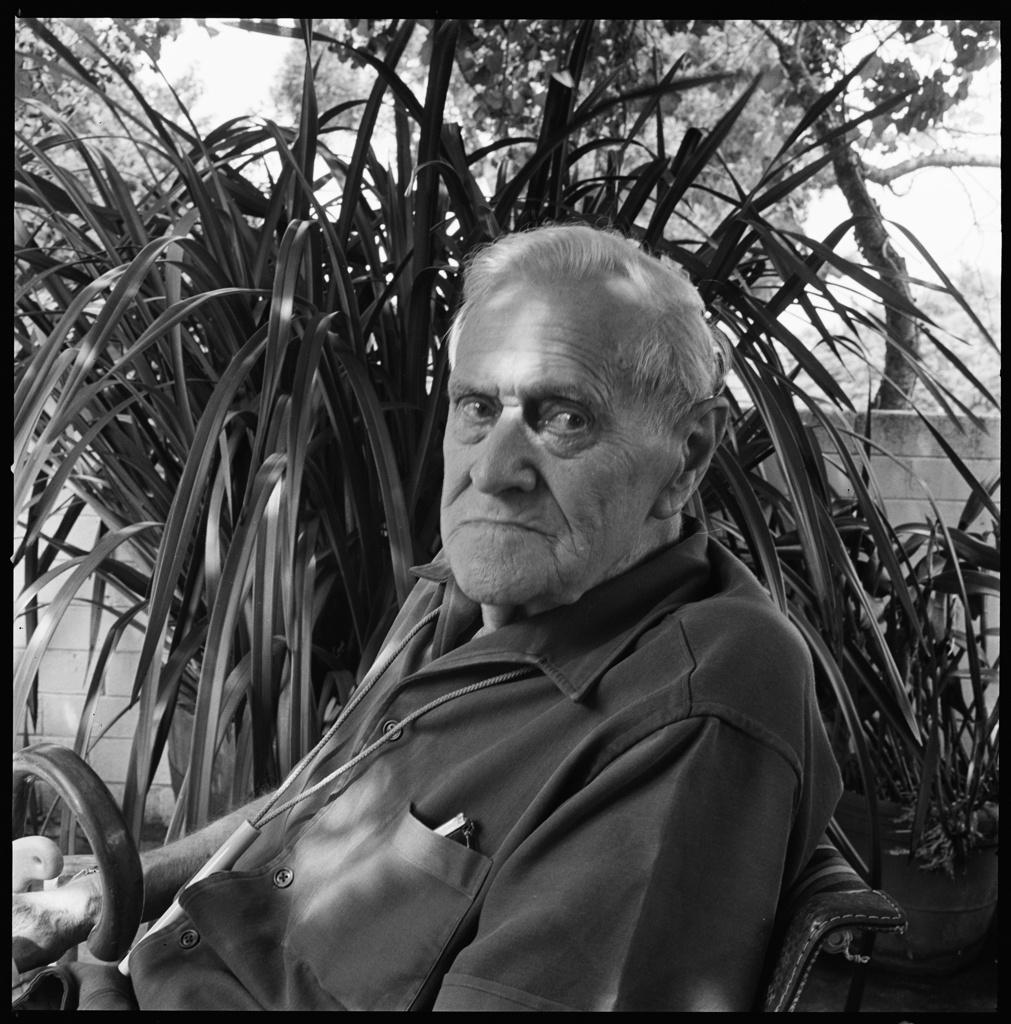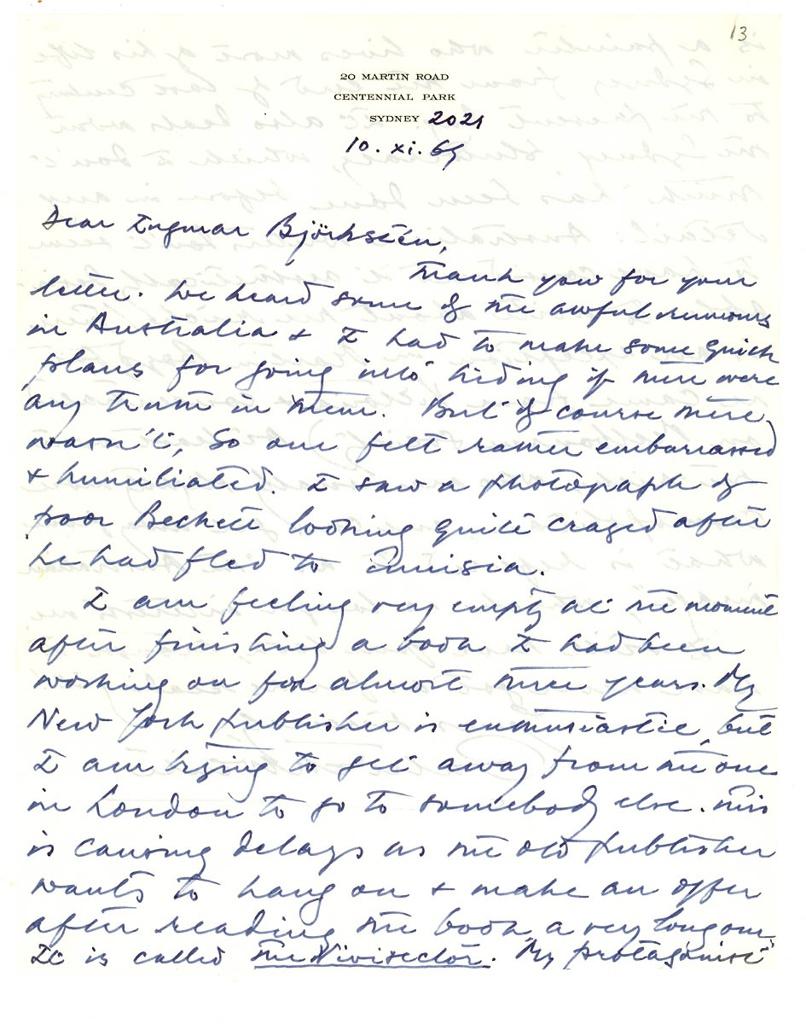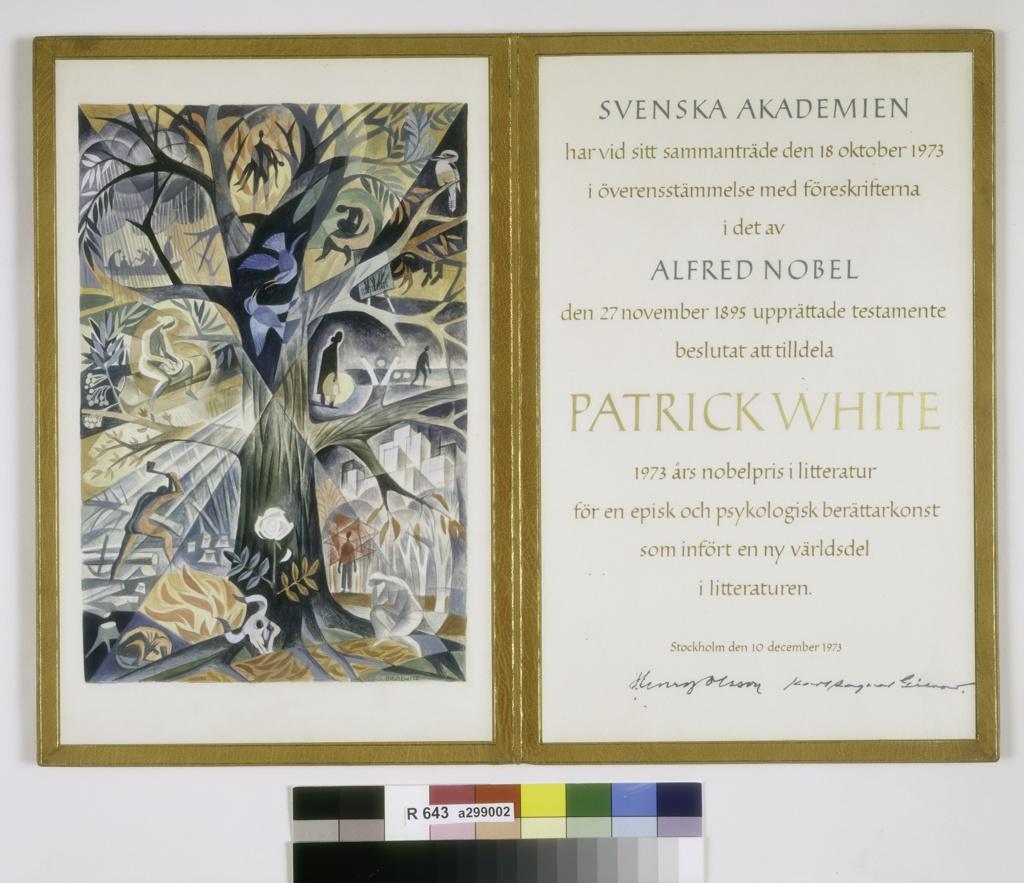To visit Martin Road in Centennial Park today is to be confronted with some of Sydney’s most opulent and imposing real estate.
Number 20, known as ‘Highbury’, where Patrick White lived with his partner Manoly Lascaris from 1964 until the author’s death in 1990, is among the more modest properties along this road. Surrounding it are mansions of garish scale — the house immediately next door is a veritable castle. It was at Highbury, on the night of 18 October 1973, that Sydney’s media converged en masse after the announcement that White had won that year’s Nobel Prize in Literature.
For reasons I can’t quite explain, I’m interested in what the weather was like that night — perhaps to build an impression of the atmosphere in and around that famous house on that famous night as White and Lascaris grappled with this strange experience. Or perhaps it’s because if White were writing this scene himself, the conditions and ambience of the moment might play a part in feeding and revealing the psychological states of those involved. It was a warm, dry, slightly windy, typical spring day that reached a high of 26 degrees. At 9 pm, when journalists converged on 20 Martin Road trying to raise White after the Swedish Academy had made its announcement, it was still 21 degrees — possibly a sticky evening for members of the press, who were having a busy week: not only was Australia winning its first Nobel Prize in Literature, but the Queen would officially open Sydney Opera House two days later, on 20 October.
White, in bed by 9 pm having taken a sleeping pill, was initially oblivious to the Nobel news. He had not been informed directly because the Swedish Ambassador to Australia could not get hold of his phone number. Requests to members of White’s circle yielded nothing, as they were instructed never to share it. So White and Lascaris learned the news thanks to journalists thumping on doors and rapping on windows — the intensifying din of voices, activity and equipment awakened the rather nonplussed author. ‘They rampaged round the house,’ he later wrote in a letter to his British publisher, ‘ringing bells, pounding doors and making the dogs bark for at least an hour and a half. Once when I looked down there were about 20 people camped on the lawn, and others on the terrace at the back.’ It was, to be sure, a surreal evening for all concerned.
The Nobel announcement came as White was on the verge of publishing two new books. His novel The Eye of the Storm was in the final proofing stage (advance copies were sent to the Swedish Academy for review), and his short story collection The
Cockatoos was also not far from publication. His most recent novel was The Vivisector (1970), the searing, torrid and extraordinary portrayal of the fictional artist Hurtle Duffield, who exploits others and abuses himself in the name of the creative process.
White had been on the radar of the Swedish Academy since the late 1960s, thanks largely to the efforts of one of its members, Artur Lundkvist, who found he had a passionate, even fevered connection with White’s prose (is there any other response?), after reading The Tree of Man in the early 1960s. In the early 1970s, one of the world’s most notable scholars of White was another Swede, Ingmar Björkstén, who published his seminal study Patrick White: A General Introduction in 1973. Thus, some important White cheerleaders were in close proximity to the Swedish Academy’s Stockholm headquarters.
As David Marr details in his regal biography, Patrick White: A Life, White appeared in the Nobel conversation for the first time in 1969, only to lose out to Samuel Beckett. He was shortlisted in 1970, the year the prize went to Aleksandr Solzhenitsyn. In 1971, Pablo Neruda’s win was reportedly a fait accompli; in 1972, to White’s chagrin, the German writer Heinrich Boll — of whom he was not a fan — was the winner. In a disappointing lack of imagination from the Academy, White was passed over during these years partly because The Vivisector, as Björkstén writes, ‘elaborates on the not at all attractive conclusion that the artist steps over dead bodies in order to give free sway to his vision of life; that he consumes people as the raw material of his art.’
When he finally won in 1973 (Saul Bellow and Nadine Gordimer were also on the list that year, among others), the prize appeared to be awarded as much for where White was writing from, and about, as much as his literary achievements. Marr quotes one of the Academy members as saying, ‘Why not award the prize to the new land of Australia?’ This thinking is echoed in the statement given by the Academy, inscribed in the certificate now held by the State Library of NSW, which describes White’s ‘epic and psychological narrative art which has introduced a new continent into literature.’
This statement has not aged well; any description of Australia as a ‘new continent’ must surely prompt unease. ‘That is very much a product of its time,’ says Jeanine Leane, a Wiradjuri scholar, writer and educator, ‘feeding into the idea that literature in this country must come from the British, settler canon. I know it was referring to Australia being less than 100 years federated, but also dangerously and quite chauvinistically to the idea literature is only a Western idea.’
Over the two decades at least, Leane has been one of the most prominent literary critics to question and reposition the legacy of canonical writers such as White, particularly his depictions of First Nations characters. The 50th anniversary of him winning literature’s most prestigious prize (even if the Nobel is, as Leane puts it, a ‘cog in the theo-capitalist wheel that is the literary economy’), is opportunity to reconsider White’s work. Perhaps the time is ripe to forge a model for reading him that takes pleasure and inspiration from his breathtaking style, while placing some elements of his writing in historical context and acknowledging their dissonance from a 21st-century standpoint.
‘Several of his really important works — Voss, Riders in the Chariot and A Fringe of Leaves — particularly rely on an Aboriginal presence and settler consciousness of Aboriginality,’ says Leane. She adds that White’s settler perspective would draw on a ‘body of story’ from Indigenous culture, without a deep or intimate knowledge of it. Leane identifies A Fringe of Leaves (1976) as particularly problematic in this way — one scene of cannibalism is a ‘complete fabrication, and that leaves a lasting legacy on First Nations people.’
‘Reading Fringe, Voss and Riders from a First Nations perspective, you do see those First Nations people very much as plot devices in White’s greater scheme of national narrative. He said he was dealing with works of greater consciousness, but in that greater consciousness is deeply embedded his own psyche, and settler consciousness of First Nations people as mystical and highly admirable in one way, but very much passé and savage in another way.’
Leane notes that White always sought to ‘distance himself from the colonial picture’ and acknowledges his commitment to Indigenous causes in the last two decades of his life. She also adds that compared to many of his forebears in Australian literature, he presented ‘a quite skilful portrayal of Aboriginal people’. She advocates for more First Nations critiques of White’s work in the coming years. ‘If you take the Aboriginal character, Alf Dubbo, out of Riders, the Aboriginal characters out of Voss and the tribe out of Fringe, he doesn’t have a story. People whose appropriation these stories hinge on should have a voice in the conversation.’
An understanding of the colonial values that are often embedded in White’s work, and the ways in which they have reinforced racial division within a ‘national narrative’, is perhaps an important tool in reading White today.
The novelist Andrea Goldsmith, an ardent White fan, agrees that historical knowledge is required to read him now. This context, hopefully, will leave the reader still able to bask in what is consistently magical about White: his grasp of style, his peculiar massaging of language, and his psychological insight.
‘He has a deep and unsentimental gaze into what makes us humane,’ says Goldsmith, who counts White as a profound influence on her novels, including the Miles Franklin-shortlisted The Prosperous Thief (2002).
‘He is a writer who deals with the spiritual without battering or waving crucifixes or Magen Davids — he does it in a way where the spiritual becomes part of what makes a moral person.
‘And stylistically he is beyond compare, his use of language is just extraordinary. He disrupts English grammar — he writes whole sentences without verbs.’
For Goldsmith, like Leane, White’s legacy 50 years on from the Nobel is also muddied, though for different reasons. When I asked my parents about their own memories of White as a public figure in the 1980s, they described a scowling, curmudgeonly elderly man.
‘He is unequivocally the outstanding Australian fiction writer,’ Goldsmith says. ‘And I don’t think this is recognised; I think it’s partly because we insist our artists be good guys, nice and sweet, terribly presentable. Patrick just wasn’t that, and I think it’s gone against him. Often people will know next to nothing about Patrick except that he was a nasty, cantankerous old man.
‘The other thing is that in this day and age, people can’t read longer than a couple of pages — who’s going to sit with Patrick? Only somebody who really wants to know how to write, I think.
‘Among the writers I know there are the devoted readers and re-readers of White, and there are those who don’t touch him. He polarises people. But [with the Nobel] he showed that Australia could be part of world literature.’
And White is part of world literature. So, 50 years on from the Nobel, how is White viewed internationally? Nicholas Birns, an American scholar of Australian literature and former editor of Antipodes literary journal, puts the establishment of that journal — and the formation of the American Association of Australian Literary Studies —down to White winning the Nobel, and the international focus that subsequently fell on Australian writing.
‘I think there was a lot of resentment of Patrick White within Australia, and part of that is because he could behave snobbishly, especially in his later years, and a lot of Australians resented that he got so much attention,’ he says. ‘This, of course, is absent globally, and is why a global perspective on Australian literature is always needed.’
Birns cites a Chinese academic, Hong Chen, as someone who brings particularly innovative new insights to White scholarship. Leane believes India and France are countries where White is studied with imagination and freshness today.
Any mention of White in the mainstream media is often accompanied by the phrase ‘Australia’s only winner of the Nobel Prize in Literature’. With each passing year, and every new winner, the question is asked who our next laureate may be. Multiple authors are bandied about — Twitter was abuzz with names in the lead-up to the 2022 announcement of the prize, which went to French writer Annie Ernaux. But two names appear consistently. The first is Gerald Murnane, the Victorian author best known for his novel The Plains. Such is Murnane’s stature that in 2018, The New York Times sent a journalist to find in him in the small Victorian town of Goroke. The result was a long profile with the headline, ‘Is the Next Nobel Laureate Tending Bar in a Dusty Australian Town?’ Murnane himself told the ABC in 2019 that he has been on the Academy’s radar for over a decade.
The other name that comes up is Alexis Wright, author of novels The Swan Book and Carpentaria, among other works. Leane is an advocate for Wright, describing the Waanyi author’s ‘brilliant literary mind … that is faithful to the First Nations philosophy of time and place and connection, but also that makes brilliant use of Western literary devices.’ Wright is also the second name Birns mentions, after Murnane, when asked about Australian literature’s next Nobel. He also suggests novelists Kim Scott, Peter Carey, Michelle de Kretser, Charlotte Wood and Alex Miller, and poet John Kinsella, as possible contenders.
After the kerfuffle at Martin Road on that balmy night, White settled into an attitude of humble, if reticent, gratitude for the award. While he was also irritated at the demands made of him and the attention he received, Marr writes that White ‘enjoyed being a great man’. White refused to travel to Stockholm to accept the medal, sending close friend, the artist Sidney Nolan, in his place. He also turned down a rare invitation to receive congratulations in Parliament. When he was announced as Australian of the Year in January 1974, he used the platform to rail against Australia Day and pay tribute to three Australian ‘mavericks’ he admired: historian Manning Clark, performer Barry Humphries and unionist Jack Mundey.
As for the prize money of $81,862 (approximately $900,000 today), White made the perhaps foolhardy decision to publicly announce that he would not keep it, which precipitated a barrage of requests from across the globe. He used the money to establish the Patrick White Award, an annual prize that recognises older Australian writers who have not received due acclaim.
Murnane won that prize in 1999. If the Victorian ever does win the Nobel, one hopes his phone number is at hand.







